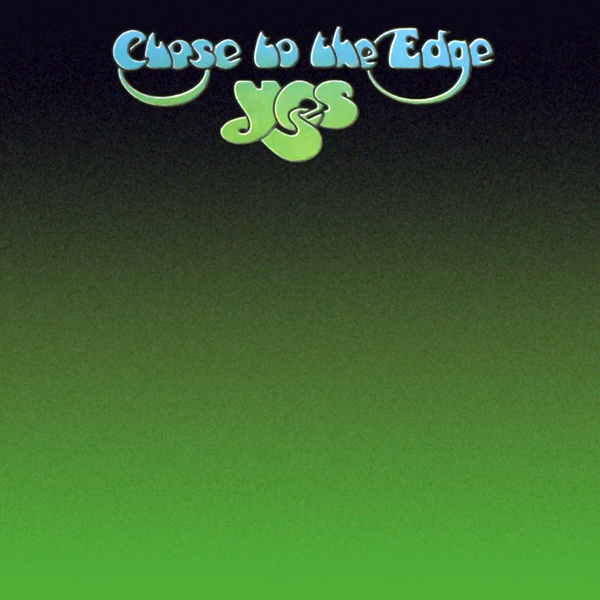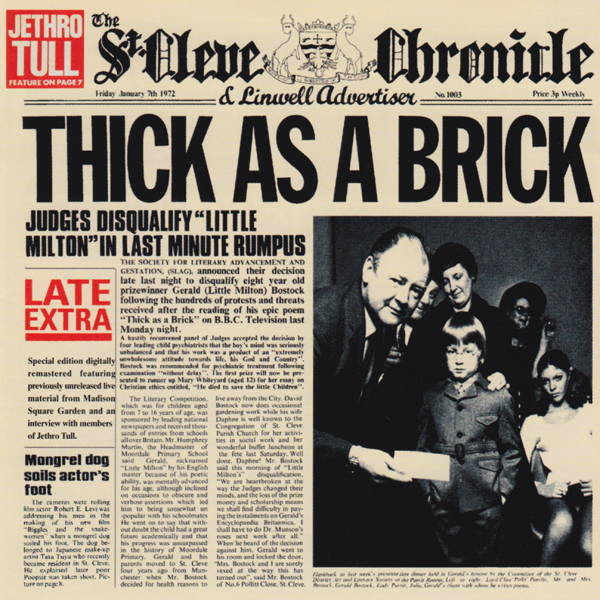Yes, ‘Close to the Edge,’ 1972

If anyone asks me what progressive rock sounds like, Close to the Edge is THE definitive statement of this genre, and it’s a towering achievement that encapsulates the genre’s boundless ambition, technical mastery, and emotional depth.
The album unfurls with its namesake opus—an 18-minute revelation that begins in nature’s embrace: birdsong dancing on crystalline waters as synthesizers rise like distant nebulae on the horizon. Then, in a magnificent collision of elements, the full ensemble descends from the heavens, Bruford’s percussion speaking in tongues of complexity while the bass pulses with an electric heartbeat that would later inspire Muse’s cosmic reverberations. Anderson’s ethereal cries suspend the instrumental tempest momentarily, conductor of chaos and calm alike. For four revolutions around the sun, instruments alone paint landscapes before Anderson’s voice—gossamer-thin yet wielding diamond strength—finally graces us with words. His lyrics float like riddles drawn from Siddhartha’s pages, transparent enough to reflect your own soul yet opaque in their intended meaning.
What elevates this composition to divinity are its valleys—diverse, atmospheric chasms between mountains of sound, transforming mere music into narrative, into symphony. These contemplative passages serve as sacred preparation for the chorus’s rare but devastating appearances, culminating in Anderson’s soul-shattering declaration: “I get up/I get down”—a sonic supernova that freezes time itself. When the organ emerges like a harbinger of apocalypse, then retreats only to return in celestial dialogue with Anderson’s reverb-drenched incantations, we witness the divine. The synthesizer’s entrance marks our final passage—a return to the controlled pandemonium of the opening, now magnified beyond mortal comprehension. The band leaps between dimensions like quantum particles until that final, triumphant explosion of the chorus leaves listeners in sacred tears, witnesses to one of music’s most transcendent moments.
The album’s remaining pieces, rather than cowering in the shadow of their predecessor, continue the spiritual ascent. And You and I carries cryptic verses delivered with such prophetic conviction that literal meaning dissolves into pure feeling. Its structure unfolds like a lotus blossom, revealing at its four-minute heart a synthesizer-organ meditation that blossoms further when touched by otherworldly guitar textures. Just when equilibrium seems achieved, Anderson again summons a chorus of such cosmic magnitude that surely distant civilizations must feel its vibrations across the void. Siberian Khatru forgoes the earth-rending choruses of its siblings, instead offering instrumental communion where bass, organ, and articulate guitar weave together before fading like a dream that continues beyond our perception, eternal in some parallel dimension.
Close to the Edge, perhaps uniquely in all of recorded sound, understands the sacred geometry of emotional crescendo. The album places its listener in meditative states of such profound beauty that when it finally ascends, we ascend with it. Its reflective passages—varied, luminous, gloriously unpredictable—create the holy context for choruses that, divorced from this album’s perfect architecture, could never achieve such emotional transcendence. Therein lies its sublime magic: a totality greater than any isolated moment, demanding complete immersion to reveal its cloud-piercing summits.
Jethro Tull, ‘Thick as a Brick,’ 1972

A truly essential album to any prog fan’s collection. Thick As A Brick is Jethro Tull in top form, so tight and complex as if the band itself is one single entity.
“Really don’t mind if you sit this one out/ My words but a whisper, your deafness a shout…” Then comes the transformation—Martin Barre’s guitar erupts with magnificent force, married to Barriemore Barlow’s thunderous percussion. This moment births an intricate tapestry, a mesmerizing journey through Jethro Tull’s elaborate parody—the mother of all concept albums—which, ironically, transcends many earnest attempts of similar ambition. Accompanied by perhaps rock’s most ingeniously conceived album cover, the work supposedly springs from the poetry of an eight-year-old boy dwelling in a quintessentially provincial English town. I confess that upon my first encounter with TAAB, I embraced this fiction wholeheartedly, marveling at the profound insights and caustic wit permeating lines like “your sperm’s in the gutter, your love’s in the sink.” Years later, discovering the elaborate ruse only enhanced my appreciation—the interview with Anderson, Barre, and Hammond-Hammond in the remastered edition stands testament to progressive rock’s capacity for self-effacing humor.
In vinyl’s golden era, TAAB unfolded across two sides, a division respectfully preserved in digital form. Unlike conventional collections of discrete songs, TAAB resists fragmented analysis. The instrumental communion throughout is sublime, with Anderson’s distinctive, narrative voice commanding the journey. Time signatures dance and transform without warning, whisking listeners from gentle acoustic landscapes to territories of intensity and tension.
Perhaps most captivating is the passage beginning with “See here, a son is born,” marking a masterful shift from the wistful, pastoral opening notes. Barre’s electric virtuosity shines alongside Anderson’s acoustic craftsmanship, all elevated by one of rock’s most criminally underrated rhythm sections in Hammond-Hammond and Barlow. John Evan commences with delicate piano cascades before his Hammond organ joins in perfect harmony with Anderson’s flute. The seamless interweaving of instrumental and vocal passages grants each musician moments of brilliance. A near-martial rhythm gradually yields, flowing into another passage adorned with piano and acoustic guitar accents. “I see you shuffle in the courtroom/With your rings upon your fingers.” Those who overlook Barlow in discussions of drumming greatness would do well to witness his performance here—and all devotees of musical excellence must lament Hammond-Hammond’s departure from the musical realm following “Minstrel in the Gallery.”
The first movement concludes in a crescendo of almost strident interplay between percussion, keys, and flute, fading to silence before resuming in contemplative slow motion. The rhythm then ascends once more with the reprise of “See here, a son is born,” showcasing truly breathtaking drum work accompanied by bells and flute. This represents perhaps the album’s most avant-garde moment, occasionally flirting with dissonance as Anderson half-sings, half-recites reflections on God as “an overwhelming responsibility” and “cats on the upgrade.” “In the clear white circles” restores the pastoral essence of the beginning, culminating in the minstrel-like, wistful atmosphere of “Do you believe in the day?” where Anderson’s plaintive vocals soar over Evan’s solemn Hammond foundation. This yields to the dynamic, march-like “Let me tell you,” featuring Anderson’s impressive flute work before flowing directly into a reprise of the “So! Come on you childhood heroes” theme from earlier—now with heightened intensity: “Where the hell was Biggles when you needed him last Saturday”—pure, eccentric brilliance from one of rock’s greatest wordsmiths. A soothing string arrangement heralds the initially chaotic, then suddenly serene return to our beginning. “So you ride yourselves over the fields/and you make all your animal deals/and your wise men don’t know how it feels/to be thick as a brick.”